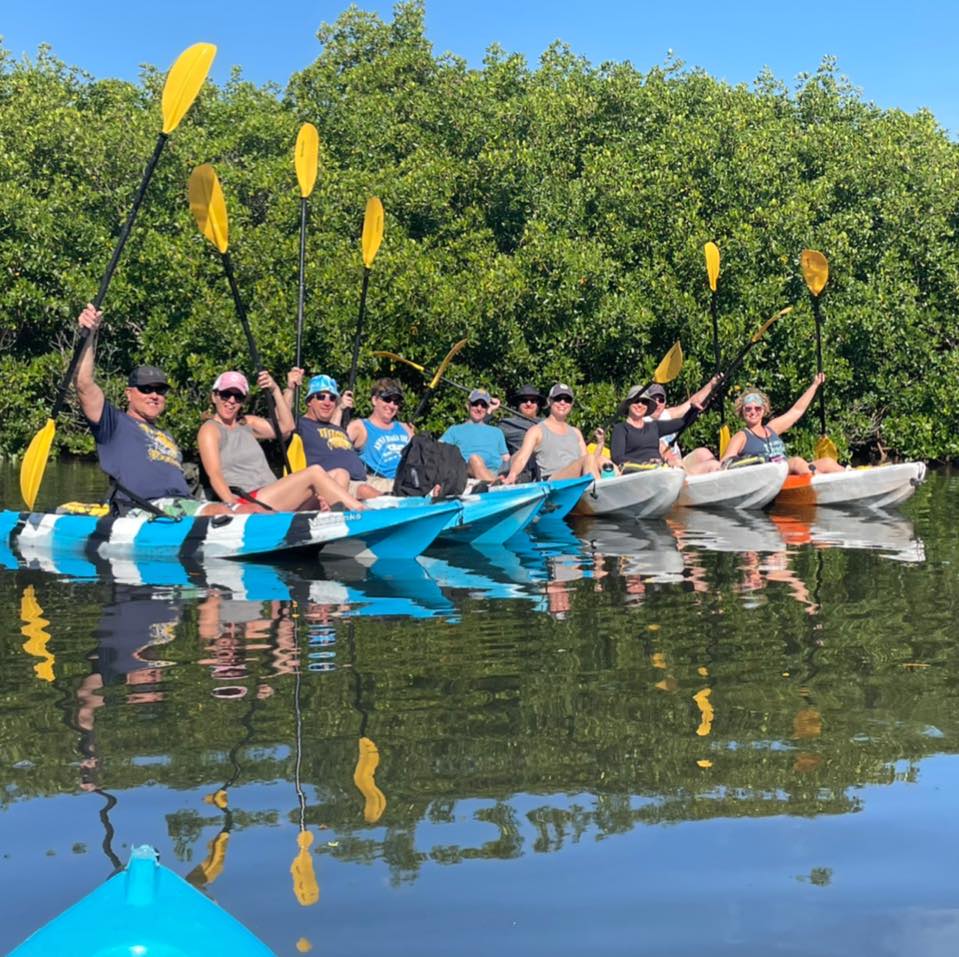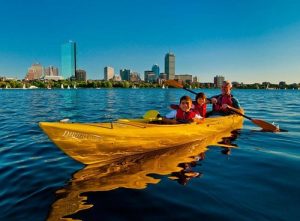Contents
Get ready to embark on an unforgettable journey as you immerse yourself in the thrilling world of kayaking. In “Exploring the Waters: Kayaking Adventures”, you’ll discover the joy and serenity of gliding through crystal-clear waters, surrounded by breathtaking landscapes. Whether you’re a seasoned paddler or a novice adventurer, this article will take you on a captivating exploration of the wonders that await you on a kayak. So grab your paddle and prepare to be amazed by the remarkable experiences that lie ahead. Let’s dive in!
Benefits of Kayaking
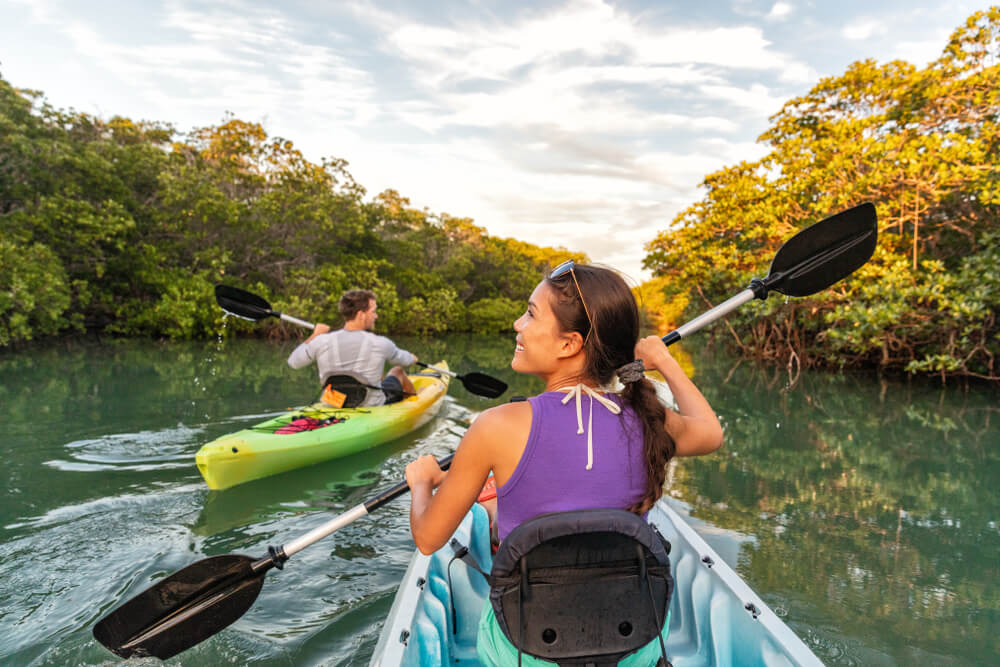
Physical Health Benefits
Kayaking offers numerous physical health benefits that can contribute to your overall well-being. One of the primary benefits is the improvement of cardiovascular fitness. Paddling through the water requires constant movement, which engages your muscles and increases your heart rate. This helps strengthen your heart and lungs, improving your endurance and stamina.
Additionally, kayaking is a low-impact activity that puts minimal stress on your joints. Unlike running or other high-impact exercises, kayaking provides a gentle workout that is suitable for people of all ages and fitness levels. It can help improve your strength and flexibility, particularly in your upper body and core muscles, as you use your arms, shoulders, and core to propel yourself through the water.
Mental Health Benefits
Beyond the physical benefits, kayaking also offers numerous mental health benefits. Being out in nature and surrounded by water can have a calming effect on the mind, reducing stress and anxiety. The rhythmic motion of paddling can help promote relaxation and mindfulness, allowing you to focus on the present moment and let go of any worries or stressors.
Kayaking also provides an opportunity to disconnect from the constant stimulation of daily life. Leaving behind technology and immersing yourself in the beauty of nature can help clear your mind and improve your mental clarity. This can lead to increased creativity, improved problem-solving skills, and a greater sense of overall well-being.
Social Benefits
In addition to the physical and mental health benefits, kayaking also offers a range of social benefits. It can be a great activity to enjoy with friends or family, providing an opportunity for quality time and shared experiences. Whether it’s embarking on a kayaking adventure together or simply paddling side by side, kayaking can help strengthen bonds and create lasting memories.
Furthermore, kayaking can also be a social activity beyond your immediate circle. Many kayaking enthusiasts join clubs or groups where they can meet like-minded individuals and share their passion for the sport. This can provide a sense of community, as well as the opportunity to learn from more experienced kayakers and discover new kayaking destinations.
Choosing the Right Kayak
Types of Kayaks
When choosing a kayak, it’s important to consider the different types available and their specific features. There are several common types of kayaks, each designed for different purposes and environments.
-
Recreational Kayaks: These kayaks are ideal for beginners or those looking for a relaxing paddle on calm waters. They offer stability and ease of use, typically featuring a wider hull for better balance.
-
Touring Kayaks: Designed for longer paddling adventures, touring kayaks provide more speed and maneuverability. They often have a narrower hull and a longer length to enhance efficiency and tracking.
-
Sit-on-top Kayaks: These kayaks are popular for warm-weather paddling and recreational activities such as fishing or snorkeling. They have an open cockpit, allowing for easy entry and exit, as well as being self-draining.
-
Whitewater Kayaks: Specifically designed for navigating fast-moving rivers and rapids, whitewater kayaks are highly maneuverable and built to withstand the challenges of rough water conditions.
-
Sea Kayaks: Sea kayaks are designed for open water and can handle rougher conditions, making them suitable for ocean or large lake paddling. They have a longer length, enhanced stability, and storage compartments for multi-day trips.
Considerations for Buying a Kayak
Before making a purchase, there are a few key considerations to keep in mind:
-
Skill Level: Consider your skill level and experience with kayaking. Beginners may want to start with a stable recreational kayak, while more experienced paddlers may be ready for a more specialized kayak designed for specific activities.
-
Intended Use: Determine your primary kayaking activities. Will you be paddling on calm lakes, exploring whitewater rivers, or venturing out into the open ocean? The type of kayak you choose should align with your intended use.
-
Size and Weight: Consider your own size and weight, as well as the size and weight of the kayak itself. Ensure that the kayak you choose is the right fit for your body, providing comfort and ease of maneuverability.
-
Storage and Transport: Think about how you will store and transport your kayak. Consider options such as inflatable kayaks or foldable kayaks if you have limited storage space or if you need to transport your kayak frequently.
-
Budget: Set a budget for your kayak purchase and research different brands and models within your price range. Remember to consider additional costs such as paddles, personal flotation devices (PFDs), and other essential gear.
Remember, it’s always a good idea to try out different kayaks before making a final decision. Renting or borrowing kayaks from friends or local rental shops can help you gain a better understanding of what type of kayak suits you best.
Essential Kayaking Gear
To ensure a safe and enjoyable kayaking experience, it’s important to have the right gear. Here are some essential items every kayaker should consider:
Personal Flotation Device (PFD)
A personal flotation device, also known as a life jacket, is a must-have item for all kayakers. It’s important to choose a PFD that fits properly and is Coast Guard-approved. Make sure to wear your PFD at all times while on the water, as it can be a lifesaver in case of an accident or if you find yourself in rough water conditions.
Paddles
Having the right paddles can greatly enhance your kayaking experience. Look for lightweight and durable paddles that are the correct length for your height and the type of kayaking you will be doing. Paddles with adjustable feathering angles can also help improve your efficiency and reduce strain on your wrists and shoulders.
Sprayskirt
A sprayskirt, also known as a spray deck, is essential for kayakers who plan to paddle in rougher water conditions or in colder climates. It covers the cockpit opening and creates a waterproof seal, keeping you dry and protected from waves splashing into your kayak. Make sure to choose a sprayskirt that is compatible with your kayak’s cockpit size and shape.

Helmet
If you plan on kayaking in whitewater or engaging in any kind of surf kayaking, a helmet is highly recommended. It provides protection for your head in case of collisions with rocks, trees, or other obstacles. Look for a helmet specifically designed for water sports and ensure it fits securely and comfortably.
Drybags
To keep your personal belongings and gear dry, invest in a few reliable drybags. These waterproof bags come in various sizes and are designed to keep your essentials, such as clothing, food, and electronics, safe from water damage. Look for drybags that are durable, easy to seal, and floatable in case they accidentally fall into the water.
Navigation Equipment
Having the right navigation equipment is crucial, especially for longer trips or when exploring unfamiliar waters. Consider investing in a compass, GPS device, or marine chart to help you navigate and prevent getting lost. Make sure to familiarize yourself with how to use these tools before heading out on the water.
Remember, always check the local regulations and safety guidelines specific to your kayaking location to ensure you have all the necessary gear and equipment for a safe and enjoyable experience.
Safety Tips for Kayaking
Know your Limits
One of the most important safety tips for kayaking is to know your personal limits and capabilities. Be honest with yourself about your skill level and experience, and choose kayaking locations and conditions that align with your abilities. It’s always better to start with easier paddles and gradually progress to more challenging ones as you gain confidence and skills.
Check Weather Conditions
Before heading out on the water, always check the weather forecast and be aware of any potential changes or storms approaching. High winds, storms, or rapidly changing weather conditions can create hazardous situations for kayakers. If unfavorable weather conditions are predicted, it’s best to postpone your kayaking adventure for another day.
Master Basic Paddling Techniques
Proper paddling techniques are essential for maintaining control and stability while kayaking. Take the time to learn and practice basic strokes, such as forward stroke, backstroke, sweep stroke, and draw stroke. Familiarize yourself with the different paddle grips and understand how to steer and maneuver your kayak effectively. Mastering these techniques will not only improve your paddling efficiency but also enhance your safety on the water.
Dress for Success
Wearing appropriate clothing and gear for kayaking is essential for your comfort and safety. Dress in layers, opting for quick-drying and moisture-wicking materials. Avoid cotton, as it retains moisture and can leave you feeling cold and uncomfortable. Consider wearing a wetsuit or drysuit if you will be kayaking in colder water temperatures. Don’t forget to protect yourself from the sun by applying sunscreen and wearing a hat and sunglasses.
Be Aware of Your Surroundings
Always be aware of your surroundings and pay attention to potential hazards or obstacles in the water. Watch out for rocks, submerged logs, or strong currents that can pose a danger to your kayak. Keep an eye on other boaters or kayakers in the area to avoid collisions. Additionally, be mindful of any wildlife or marine animals that may be present, and give them a safe distance to avoid any unnecessary interaction or disturbance.
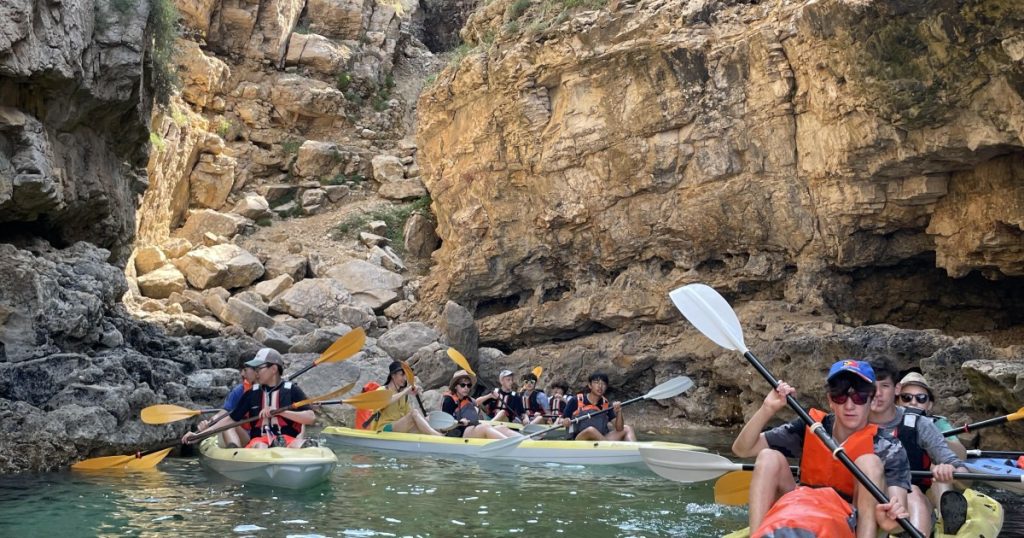
Bring a Kayaking Buddy
Kayaking with a buddy can greatly enhance your safety on the water. Having someone with you provides an extra set of eyes and assistance in case of an emergency. If possible, choose a kayaking location where there will be other kayakers or boaters nearby. It’s always advisable to notify someone on land about your kayaking plans, including your intended route, estimated time of return, and emergency contact information.
Learn Self-Rescue Techniques
Knowing self-rescue techniques can be invaluable in case of a capsize or other emergency situations. Practice techniques such as the wet exit, where you properly exit your kayak when flipped over, and re-entering your kayak from the water. Learning these self-rescue techniques will help you stay calm and composed in the event of an accident and improve your chances of getting back into your kayak safely.
Remember, safety should always be your top priority when kayaking. By following these safety tips and using common sense, you can enjoy your kayaking adventures while minimizing risks and ensuring a positive experience.
Top Kayaking Destinations
Pacific Northwest, United States
The Pacific Northwest region of the United States is a haven for kayaking enthusiasts. With its diverse and breathtaking landscapes, from lush rainforests to rugged coastlines, there are plenty of kayaking opportunities to explore. The San Juan Islands in Washington state are particularly popular, offering calm waters and stunning views of marine wildlife such as orcas and seals. The Olympic Peninsula and the Columbia River Gorge in Oregon are also renowned for their scenic kayaking routes.
The Great Barrier Reef, Australia
For an unforgettable kayaking experience, head to Australia’s Great Barrier Reef. This UNESCO World Heritage Site is renowned for its vibrant coral reefs and diverse marine life. Paddling through the crystal-clear waters, you’ll have the chance to spot tropical fish, turtles, and even dolphins. With numerous kayak tour operators available, you can choose between day trips or multi-day expeditions to fully immerse yourself in this natural wonder.
Norwegian Fjords, Norway
Norway’s dramatic fjords offer a kayaking experience like no other. With towering cliffs, cascading waterfalls, and serene blue waters, these fjords provide a breathtaking backdrop for exploration. The Geirangerfjord and the Nærøyfjord are two notable destinations for kayakers, offering a unique perspective of the Norwegian wilderness. Keep an eye out for seals, eagles, and the occasional whale as you paddle through these awe-inspiring natural wonders.
Ha Long Bay, Vietnam
Ha Long Bay is a UNESCO World Heritage Site and a must-visit destination for kayakers. Located in northern Vietnam, this stunning bay is dotted with thousands of limestone karsts and islets, creating a picturesque landscape. Kayaking through the emerald waters allows you to navigate narrow passages and hidden caves, immersing yourself in the natural beauty of the area. Don’t miss the opportunity to explore the famous Thien Cung Cave, known for its mesmerizing rock formations.
Glacier Bay National Park, Alaska
For a truly immersive kayaking experience, head to Glacier Bay National Park in Alaska. This remote and pristine wilderness offers unparalleled opportunities for kayaking amidst glaciers, mountains, and abundant wildlife. Paddle through calm waters surrounded by massive icebergs and listen to the thunderous cracks of glaciers calving into the sea. Keep your eyes peeled for humpback whales, sea otters, and bald eagles that call this area home.
Lake Louise, Canada
Nestled in the heart of the Canadian Rockies, Lake Louise is a picturesque destination for kayaking. The turquoise waters of the lake, surrounded by snow-capped mountains, create a stunning backdrop for paddling. With rental options available, you can explore the calm waters at your own pace and take in breathtaking views of the surrounding landscapes. Be sure to keep your camera handy, as you’ll want to capture the beauty of this iconic Canadian destination.
These top kayaking destinations offer a range of experiences for kayakers of all levels. Whether you’re seeking serene lakes, thrilling coastal routes, or unique encounters with wildlife, these destinations are sure to provide unforgettable adventures.
Kayaking for Beginners
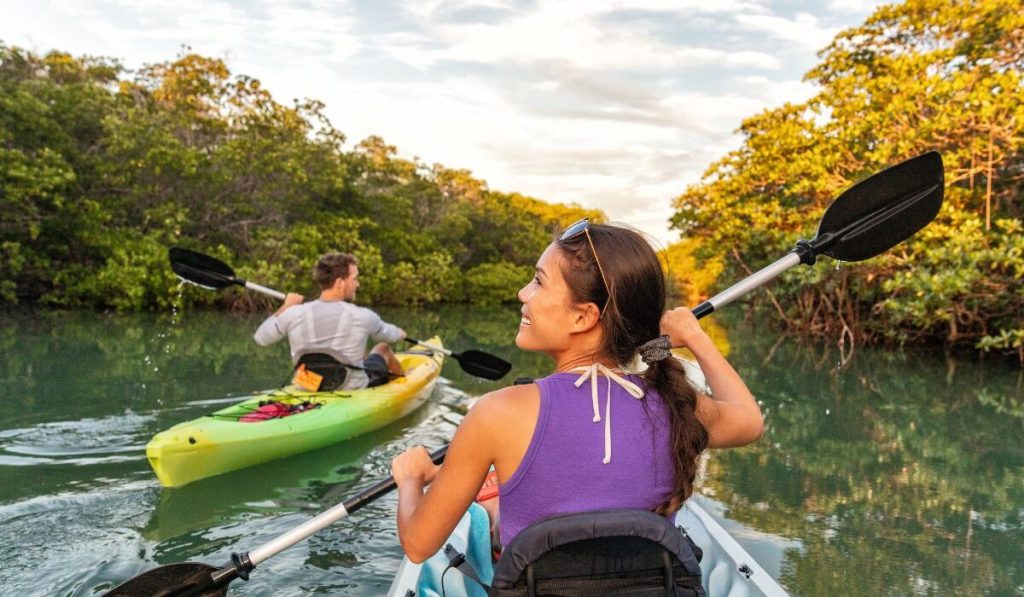
Choosing a Beginner-Friendly Location
As a beginner kayaker, it’s important to choose a location that is suitable for your skill level and offers a safe and enjoyable paddling experience. Look for calm and sheltered waters, such as small lakes, slow-moving rivers, or protected bays. These types of water bodies are ideal for practicing basic paddling techniques and gaining confidence on the water. Avoid locations with strong currents, large waves, or challenging navigational obstacles until you have developed more experience and skills.
Getting Started with Basic Techniques
Start your kayaking journey by mastering the basic techniques that will form the foundation of your paddling skills. Begin by learning the correct paddling grip and posture, with your feet resting on the foot braces or footrests for stability. Practice the forward stroke, which involves reaching forward, submerging the paddle blade, and pulling it through the water, while using torso rotation for added power. Also, learn the reverse stroke, sweep stroke, and draw stroke to help you steer and maneuver your kayak effectively.
Building Up Stamina and Endurance
Building up your stamina and endurance is important to ensure you can enjoy longer and more challenging paddling adventures. Start slowly and gradually increase the duration and intensity of your kayaking sessions. Consider incorporating other forms of exercise, such as swimming, hiking, or cycling, into your routine to improve your overall fitness and strengthen the muscles used for kayaking. Engaging in regular physical activity outside of kayaking will help you develop the necessary strength and stamina to tackle longer paddling trips.
Learning Proper Paddling Techniques
To enhance your paddling efficiency and minimize strain on your muscles, it’s important to learn and practice proper paddling techniques. Seek guidance from experienced kayakers or consider taking lessons to ensure you are using the correct form. Focus on using your core muscles and torso rotation rather than relying solely on your arms for power. Proper technique will not only make paddling easier but also help prevent injuries and discomfort associated with incorrect form.
Navigating Different Types of Water
As a beginner kayaker, it’s important to gain experience in different types of water to build your confidence and skills. Start with calm and flat water, such as lakes or ponds, to practice basic techniques and gain familiarity with your kayak. Gradually progress to slow-moving rivers or gentle coastal waters to experience slightly more challenging conditions. Remember to always assess the water conditions and any potential hazards before embarking on a new paddling location.
Understanding Safety and Rescue Techniques
Before heading out on the water as a beginner kayaker, familiarize yourself with basic safety and rescue techniques. Learn how to properly fit and wear a personal flotation device (PFD) and understand how to perform a wet exit and self-rescue techniques in case of a capsize. Knowing how to perform a T-rescue or an assisted rescue can also be beneficial when kayaking with others. Taking a kayaking safety course or joining a beginner-friendly kayaking group can provide you with valuable knowledge and training in these essential skills.
Remember, as a beginner kayaker, it’s important to start slowly, gradually progress, and always prioritize your safety. Being patient with yourself and seeking guidance from experienced kayakers will help you build a strong foundation and confidence in your kayaking abilities.
Discovering the Marine Wildlife
Encountering Dolphins and Porpoises
One of the most exciting experiences while kayaking is encountering dolphins and porpoises in their natural habitat. These intelligent and playful creatures are known for their curiosity and can often be spotted near coastlines and in calm ocean waters. Keep a respectful distance and observe from afar to avoid disturbing their natural behavior. If they become interested in your presence, consider staying still or paddling quietly to allow for a closer interaction.
Spotting Whales
Kayaking provides a unique opportunity to witness the majestic beauty of whales up close. Many whale species migrate through certain regions, offering incredible sightings for kayakers. Humpback whales, for example, are known for their acrobatic displays, breaching, and tail slapping. When kayaking near whales, maintain a safe distance and be mindful of their behavior. Admire these gentle giants from a distance to ensure their well-being and to respect any regulations in place.
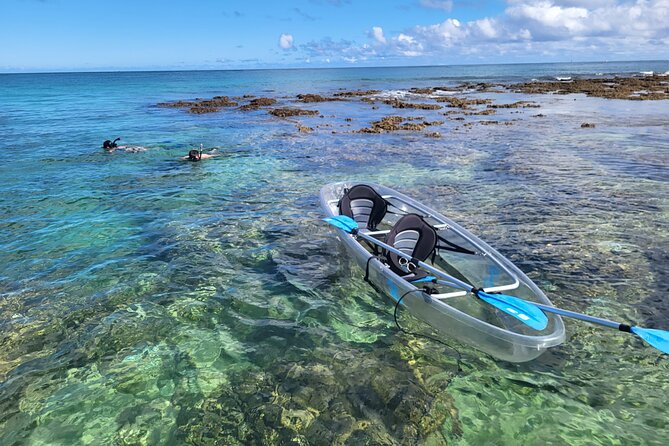
Observing Sea Turtles
Kayaking in areas where sea turtles reside can provide a wonderful opportunity to observe these ancient creatures in their natural habitat. Sea turtles often surface to breathe, providing an incredible sight for kayakers. Keep a respectful distance and avoid any sudden movements or loud noises that may startle or disturb them. Enjoy the rare privilege of observing these gentle creatures as they gracefully navigate through the water.
Bird Watching
Kayaking can also be a fantastic way to indulge in bird watching. Coastlines, estuaries, and wetlands are often home to a wide variety of bird species. Paddle slowly and quietly to avoid scaring away the birds and keep your eyes and ears open for any signs of avian activity. Whether it’s spotting elegant herons or observing colorful kingfishers, bird watching while kayaking offers a unique and peaceful experience for nature enthusiasts.
Discovering Coral Reefs
For those lucky enough to paddle in tropical waters, exploring coral reefs from a kayak is an adventure like no other. Crystal-clear waters, vibrant coral formations, and a kaleidoscope of colorful fish await you. Paddle gently to avoid damaging the fragile coral and use polarized sunglasses to better see the underwater spectacle. Admire the beauty and diversity of the coral reef ecosystem, and remember to leave no trace by not touching or removing any marine life.
Exploring Mangrove Forests
Mangrove forests are unique ecosystems that feature dense networks of tangled roots. Paddling through these forests can be a serene and enchanting experience, allowing you to observe a variety of wildlife species. Look out for crabs scuttling along the roots, colorful fish darting through the water, and birds nesting in the branches overhead. Pay attention to tidal currents and choose a calm day to ensure a peaceful and enjoyable exploration of these fascinating habitats.
While encountering marine wildlife can be an incredible experience, it’s important to remember to always observe from a safe distance and avoid disturbing or interfering with the animals’ natural behavior. Respect their habitats and adhere to any local regulations or guidelines in place to protect their welfare and preserve these magical encounters for future generations.
Extreme Kayaking
Whitewater Kayaking
Whitewater kayaking is an adrenaline-pumping sport that involves paddling through fast-moving rivers and rapids. It requires advanced paddling skills, quick reflexes, and an affinity for adventure. From navigating through turbulent rapids to performing thrilling maneuvers, whitewater kayaking offers an exhilarating experience for those seeking an adrenaline rush. It’s essential to undergo proper training, wear appropriate safety gear, and paddle with experienced kayakers to ensure a safe and enjoyable whitewater kayaking adventure.
Sea Kayaking in Challenging Conditions
For experienced kayakers looking for a challenge, sea kayaking in challenging conditions can provide a thrilling experience. Paddling in open water with strong winds, large swells, and turbulent currents requires advanced skills and a deep understanding of the ocean dynamics. It’s crucial to have strong navigation abilities, be prepared for potential changes in weather, and carry essential safety equipment. Sea kayakers who venture into challenging conditions should also consider joining coastal kayaking groups or obtaining advanced training to ensure their safety.
Kayak Surfing
Kayak surfing combines the thrill of surfing with the maneuverability of kayaking. It involves paddling out into breaking waves and riding them back to the shore. Surf kayaks, designed specifically for this activity, have a specialized hull shape and surfboard-like fins for enhanced control on the waves. Kayak surfing requires strong paddling skills, balance, and an understanding of wave dynamics. It’s important to choose suitable surf spots, wear a helmet and other appropriate safety gear, and be aware of other surfers in the area to ensure a safe and enjoyable experience.
Kayak Fishing
For fishing enthusiasts, kayak fishing offers a unique and exciting way to pursue their passion. Fishing from a kayak allows anglers to access remote fishing spots that are often inaccessible by other means. Kayaks designed for fishing are equipped with features such as rod holders, storage compartments, and built-in mounts for fish finders or GPS devices. Prioritize safety by wearing a PFD at all times and ensure that your kayak is stable and suitable for fishing in various water conditions. Familiarize yourself with local fishing regulations and practice catch-and-release techniques to promote sustainable fishing practices.
Extreme kayaking activities require a high level of skill, experience, and preparedness. It’s important to continually enhance your abilities, undergo proper training, and paddle with experienced kayakers adept in extreme conditions. Always prioritize safety and follow safety guidelines specific to the extreme kayaking activity you choose.
Kayaking Safety and Rescue Techniques
Non-Essential Equipment
In addition to the essential gear mentioned earlier, there are some non-essential items that can enhance your safety and comfort while kayaking. These include:
-
Kayak Bilge Pump: A bilge pump is a handy tool for removing any water that may accumulate in your kayak, especially after a capsize or rough water conditions.
-
Tow Line: A tow line can be useful, especially during expeditions or in case of emergency situations where you may need to tow or be towed by another kayak.
-
Throw Bag: A throw bag contains a length of floating rope that can be thrown to a person in the water for self-rescue or to assist individuals in need of help.
-
First Aid Kit: Carrying a basic first aid kit is essential to address minor injuries that may occur during your kayaking adventures.
While not mandatory, these additional items can provide added safety measures and peace of mind while kayaking.
Self-Rescue Techniques
Knowing self-rescue techniques is crucial for kayakers to safely handle unexpected situations, such as capsizing or getting separated from their kayak. Here are some self-rescue techniques to be familiar with:
-
Wet Exit: When capsizing, perform a wet exit by leaning forward, pulling the spray skirt loop, and rotating your body out of the kayak. This allows you to exit the kayak and resurface.
-
Re-entry and Roll: If you have mastered the roll technique, you can attempt to roll your kayak upright while still in the water. This allows you to regain control and get back into your kayak without exiting the water.
-
Assisted Re-entry: In deeper water, an assisted re-entry involves a partner stabilizing your kayak while you re-enter from the side or the stern. This technique requires coordination and practice with your kayaking buddy.
Assisted Rescues
Assisted rescues are techniques used to help a kayaker who is unable to self-rescue or needs assistance. Here are two common assisted rescue techniques:
-
T-Rescue: In a T-rescue, another kayaker forms a “T” shape with their kayak and stabilizes the capsized kayak. The person in the water can then re-enter their kayak with the assistance of the rescuer.
-
Eskimo Rescue: The Eskimo rescue, also known as the paddle-float rescue, involves using a paddle float as an outrigger to stabilize the capsized kayak. The person in the water can then re-enter their kayak and pump out any excess water.
It’s important to practice and become comfortable with these techniques in calm, controlled environments before attempting them in more challenging conditions.
Towing and Being Towed
Knowing how to tow and be towed by another kayak can be valuable in emergency situations or when assisting a tired or injured paddler. Here are some key points to keep in mind when towing:
-
Tow Line Attachment: Attach the tow line to a secure point on both kayaks, ensuring there is enough slack for maneuverability.
-
Communication: Establish clear communication signals with the person towing and coordinate movements to prevent accidents or collisions.
-
Maintaining Speed: The person being towed should paddle lightly to maintain tension on the tow line, while the towing kayak keeps a steady pace.
-
Safety Release: Always have a quick-release mechanism in place on the tow line to detach quickly in case of unexpected circumstances.
It’s important to practice towing and being towed with a partner in a controlled environment to ensure you are familiar with the techniques and can perform them safely.
Dealing with Capsizing
Capsizing is a part of kayaking that every paddler should be prepared for. Here are some important steps to take when dealing with a capsized kayak:
- Stay calm and keep hold of your paddle and kayak. Assess the situation and any potential hazards.
- Perform a wet exit by leaning forward, pulling the spray skirt loop, and exiting the kayak.
- Grab onto your kayak or other floating objects to ensure you stay buoyant.
- If necessary, use your whistle or other signaling devices to attract attention.
- If conditions allow, attempt to perform a self-rescue or assisted rescue to re-enter your kayak.
- If unable to re-enter, consider swimming to the nearest shoreline or seeking assistance from nearby kayakers or boaters.
Remember, remaining calm and acting quickly will help ensure your safety in the event of a capsizing. Regular practice of self-rescue techniques is essential to build confidence and be prepared for unexpected situations.
Eco-Friendly Kayaking
Leave No Trace Principles
Practicing Leave No Trace principles ensures that your kayaking adventures have a minimal impact on the environment. Here are some key principles to follow:
-
Plan Ahead and Prepare: Research your kayaking destination, understand any regulations, and pack appropriate gear and supplies. Take into account the potential environmental impacts of your activity and plan accordingly.
-
Travel and Camp on Durable Surfaces: When making landfall, choose areas such as sandy beaches or rocky shores that can withstand foot traffic. Avoid trampling on sensitive vegetation or disturbing wildlife habitats.
-
Dispose of Waste Properly: Pack out any trash or waste items, including food wrappers, bottles, and other personal items. Properly dispose of human waste following local guidelines and use biodegradable soaps and toiletries.
-
Leave What You Find: Refrain from collecting natural souvenirs or disturbing cultural or historical artifacts. Leave rocks, shells, and other natural objects as you found them to preserve the ecosystem’s balance.
-
Minimize Campfire Impacts: In locations where campfires are allowed, use existing fire rings or designated fire pits. Keep fires small and extinguish them completely, using water to ensure no embers remain.
-
Respect Wildlife: Observe wildlife from a safe distance and do not approach, feed, or disturb them. Minimize noise and avoid getting too close to nesting sites or dens.
-
Be Considerate of Other Visitors: Respect others’ experiences by keeping noise levels low and avoiding overcrowding at launch areas or scenic spots. Yield to other paddlers or boaters when necessary and maintain a friendly and courteous attitude.
By practicing these principles, you can ensure that future generations can also enjoy the beauty and wonders of the natural world while kayaking.
Respecting Wildlife and Marine Habitats
Preserving wildlife and marine habitats is essential for the sustainability of our ecosystems. To respect wildlife and their habitats while kayaking:
-
Maintain a Safe Distance: Keep a respectable distance from wildlife to avoid causing stress or harm. Use binoculars or a zoom lense to observe from afar without disturbing the animals.
-
Avoid Disturbing Nesting Sites: On shore, be mindful of nesting areas or rookeries, especially during breeding seasons. Disturbing nesting sites can result in the abandonment of nests, harming the overall population.
-
Avoid Touching or Feeding Wildlife: Do not attempt to touch or feed marine wildlife, as it can disrupt their natural behavior and alter their diet patterns. Keep in mind that human food can be harmful or toxic to wild animals.
-
Do Not Feed Birds: Feeding birds, particularly in marine environments, can lead to dependency on human food, which may negatively impact their natural foraging abilities and alter their migration patterns.
-
Stay Clear of Sensitive Habitats: Avoid paddling through sensitive areas, such as seagrass beds, coral reefs, or fragile ecosystems. Collisions with these habitats or disturbing the organisms can cause irreparable damage.
Remember, the goal is to appreciate wildlife and marine habitats from a distance while minimizing any potential disturbance to their natural behavior and ecosystems.
Participating in Conservation Efforts
As a kayaker, you have the opportunity to contribute to conservation efforts and protect the natural environment. Here are some ways you can get involved:
-
Join Clean-up Initiatives: Participate in local beach or waterway clean-up events to help keep our waterways free of litter and debris. Pick up any trash you come across during your kayaking adventures.
-
Support Conservation Organizations: Research and support organizations that are dedicated to the preservation of water ecosystems, wildlife conservation, and environmental education. Donate or volunteer your time to their causes.
-
Practice Responsible Fishing: If you engage in kayak fishing, follow catch-and-release practices, adhere to fishing regulations, and use non-toxic fishing gear to minimize the impact on fish populations and their habitats.
-
Educate Others: Share your knowledge and experiences with others, advocating for eco-friendly kayaking practices and promoting respect for the environment. Encourage others to prioritize sustainability and conservation in their recreational activities.
By actively participating in conservation efforts, you can make a positive impact on the environment and help ensure that future generations can continue to enjoy the beauty and wonders of kayaking.
In conclusion, kayaking offers a wealth of physical, mental, and social benefits. It allows you to connect with nature, explore incredible destinations, and discover the wonders of the marine world. By choosing the right kayak, equipping yourself with essential gear, and following safety guidelines, you can embark on unforgettable kayaking adventures while respecting and preserving the environment. So grab your paddle, don your PFD, and embark on a kayaking journey that will bring you joy, serenity, and a deep appreciation for the natural world. 🚣♀️

